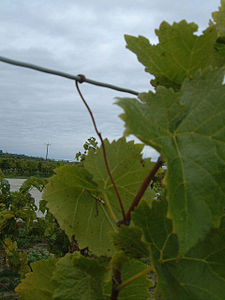
Most of the time, we do not think of plants as having the ability to plan, move, and attack. Certain behaviors of plants have been known for many years, such as the ability to turn to face sunlight, to open and close leaves each day and night, and to catch insects. It is only recently that the behavior of plants has moved into the center of biological research, with some striking findings that raise further questions about what plants know and what they are able to do. We are beginning to see complex communication between plants, and elaborate defenses against invaders.
A Plant Predator
The Dodder plant, related to morning glories, is a very toxic weed that presents problems for other plants. It has very poor ability to use photosynthesis to produce its own energy and organic material. For survival, it has to get its nutrients as a parasite. Like predator animals, it gets food from attacking other plants. But, how can a plant attack other plants?
Recent research has taken Dodder plants and placed them away from other plants. Dodder is able to sense other plants, even feet away, and to grow toward them, guided by a sense of smell. When the Dodder reaches a nearby plant, it places a feeler on the plant stalk and can detect whether it is nutritious or not. If the plant is not a high quality candidate from which to extract nutrients, such as a wheat plant, it pulls back the feeler from that plant and grows toward another plant. When it finds a plant that is rich in nutrients, such as a tomato, it spends two days winding itself several times around the plant. It then attacks the plant by attaching suckers and extracting the nutrients from the other plant.
The Dodder will not grow toward fake plants. It will grow toward a chemical with tomato essence, but not to other smelly organic compounds. This means it is clearly able to differentiate the smells of the plants it wants to attack.
Cognitive Abilities
This behavior of the Dodder plant shows abilities including sensing other plants, moving towards them, determining the amount of nutrients in the plants, and then actively taking the nutrients for itself.
Future posts will discuss elaborate communication between plants and other species, and complex defense mechanisms including planning for a future event. What is the “brain” in a plant that allows these cognitive processes without neurons or brains?